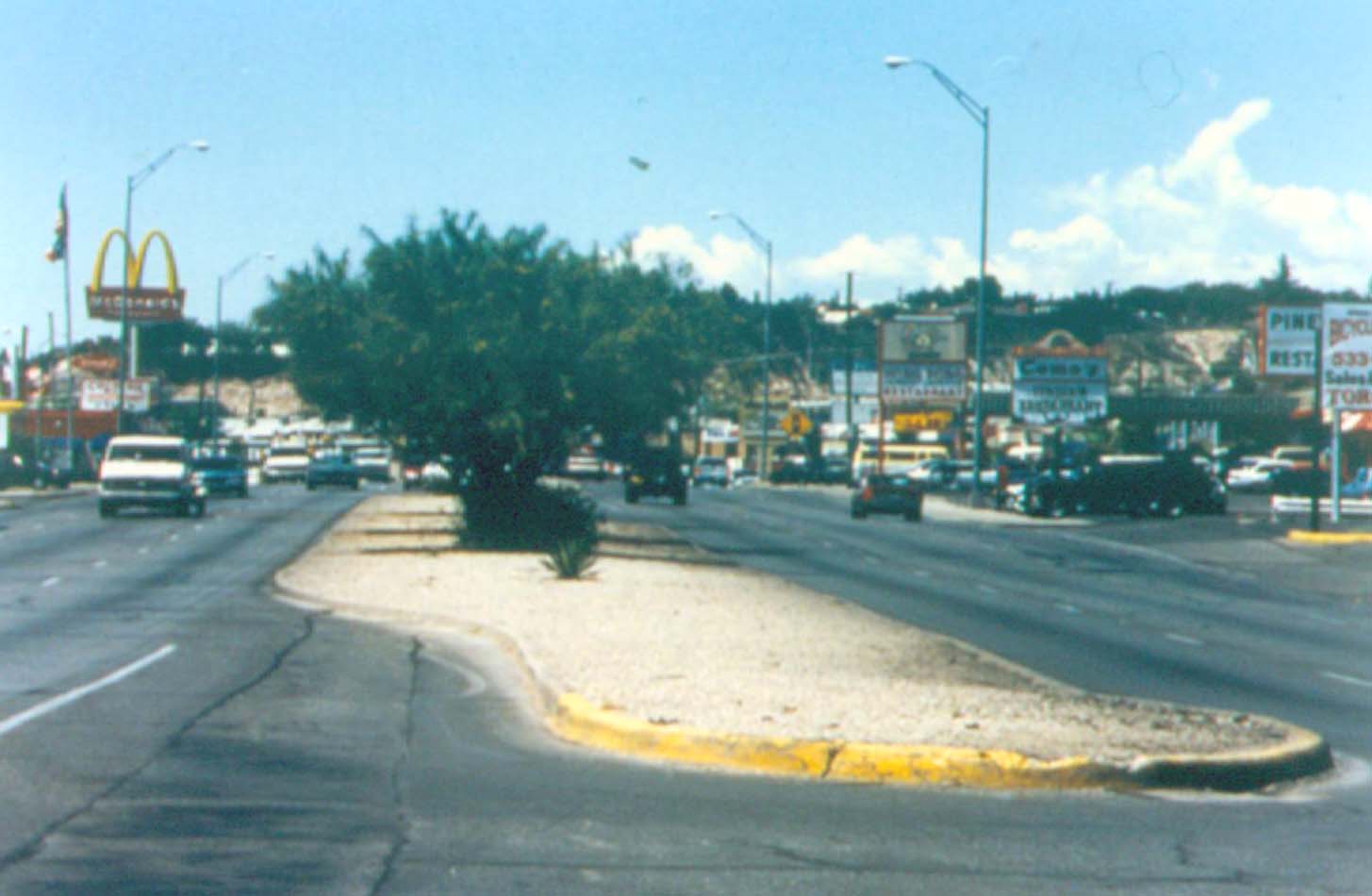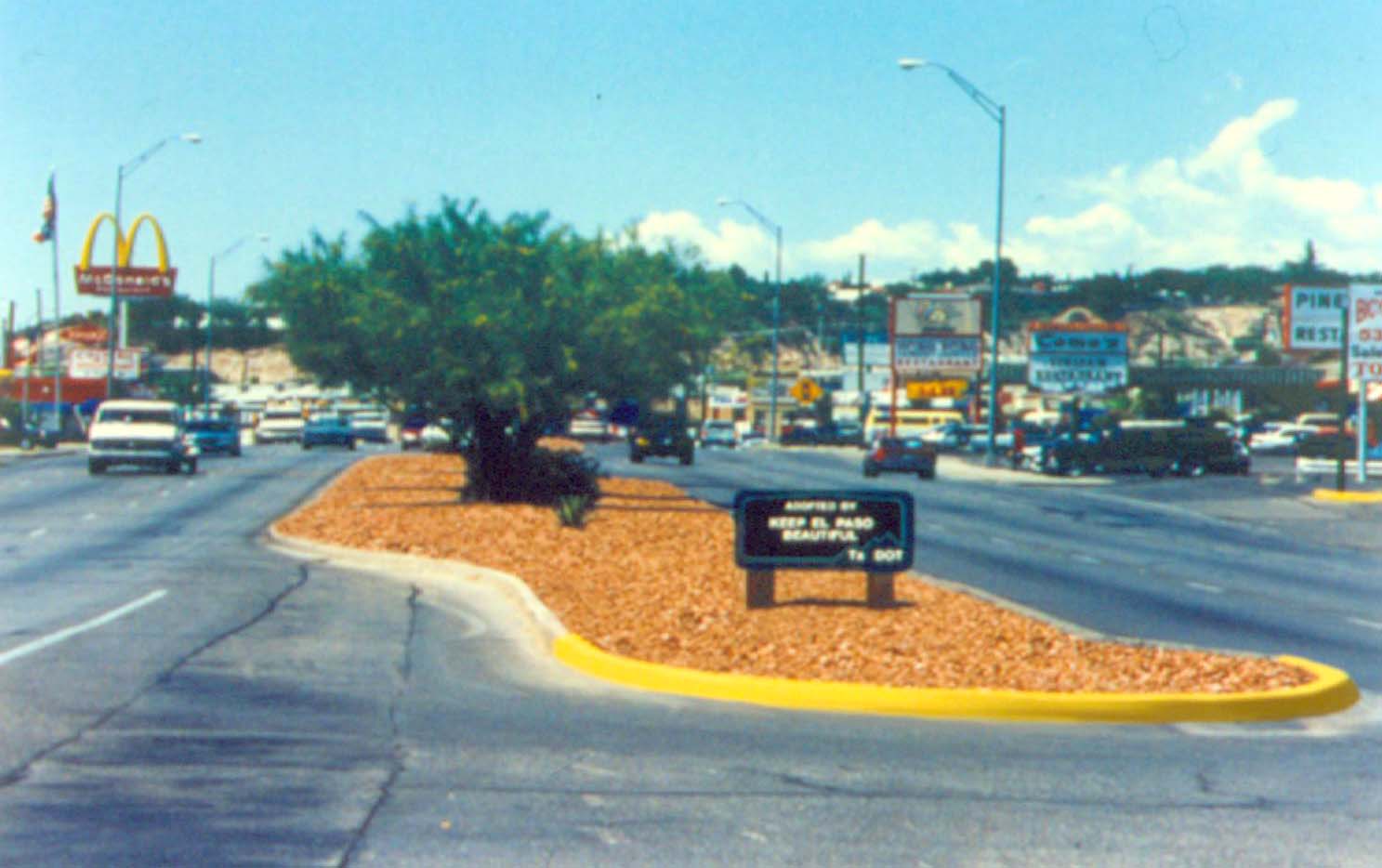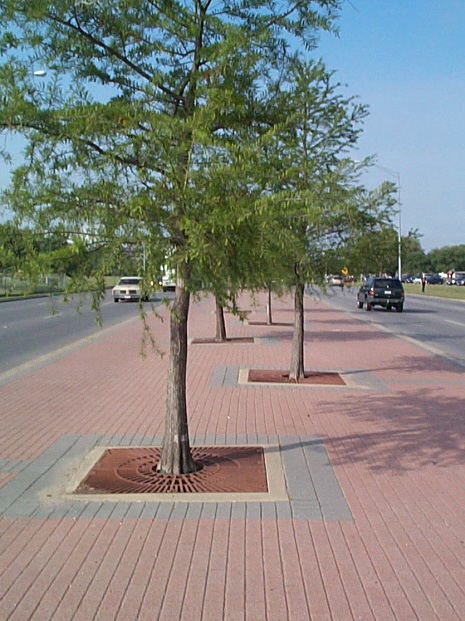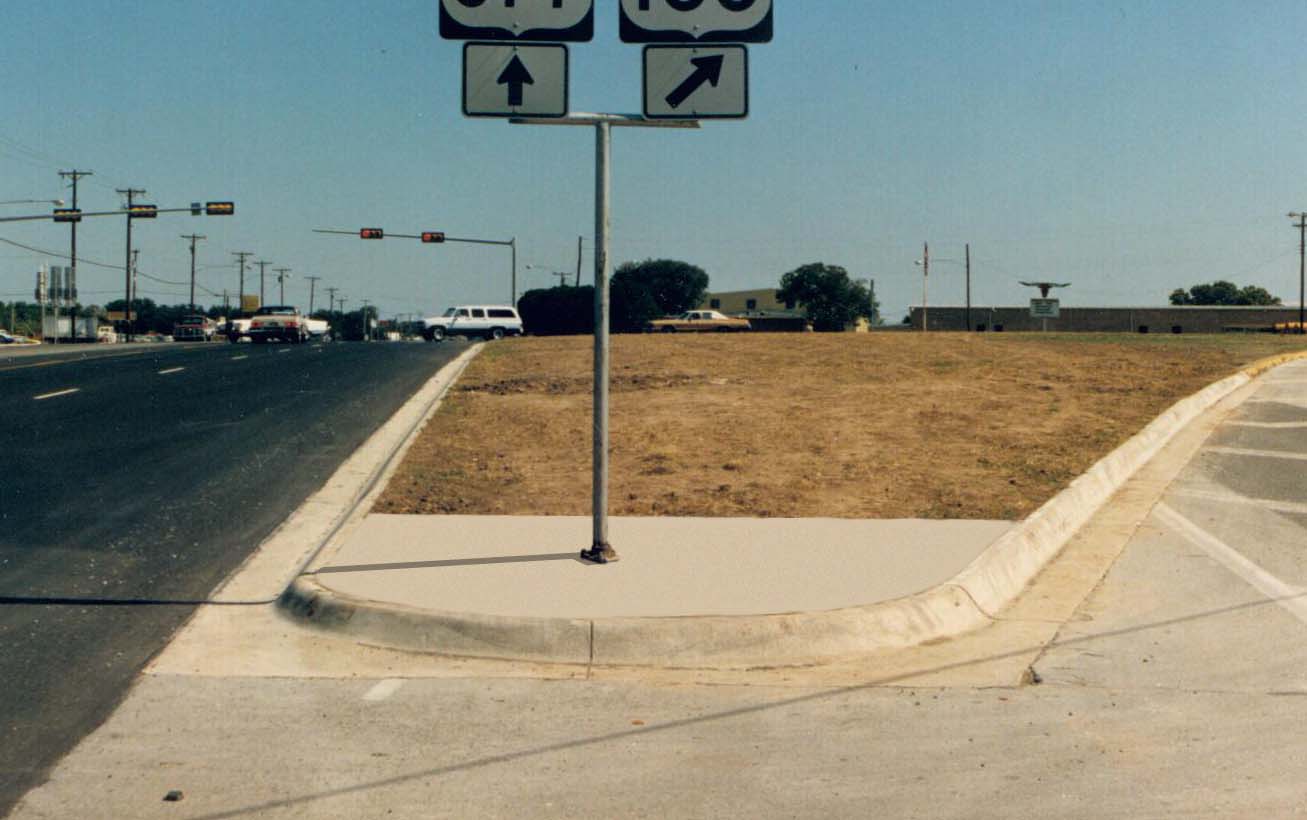Section 12: Medians and Traffic Islands
Anchor: #i1011977Overview
The primary function of medians and traffic islands is safety. They are provided to separate traffic streams and to guide turning movements at intersections. It is important that medians and traffic islands be delineated in a way that makes them visible and distinguishes them from the adjacent driving lanes.
Medians and traffic islands also provide an opportunity to add aesthetic quality to the highway setting by manipulating the materials used. This section deals specifically with the aesthetic considerations of median and traffic island design.
Subsections in the section cover the functional elements and aesthetic elements of medians and traffic islands.
Anchor: #i1012000Functional Elements
Medians and traffic islands provide a visual separation between driving lanes and help direct traffic. In order to accomplish this task it is important that the medians and traffic islands visually contrast with the driving lanes, particularly at night. Visual contrast may be achieved by manipulating color and materials. The following guidelines can be used to assist in color and material selection.
- Anchor: #EQJITHXB
- Select materials that have a strong color contrast with the pavement (refer to Figures 4-26 and 4-58). Warm earth tones in the sienna to terra cotta range provide an excellent contrast. These colors are common in clay and concrete paving units. Avoid pavers in the gray range with blue or violet tones. Anchor: #MORRNUJE
- Choose materials with integral color to avoid the maintenance associated with stains and other surface color treatments. Aggregate may be suitable for groundcover in low-rainfall areas. Anchor: #GCSTUDAY
- When selecting colors for the ground select more intense colors than might be selected for interior use. Colors will be washed out by bright sunlight and will not appear as bright as they are indoors (see Figures 4-77 and 4-78). Anchor: #MFQYYRQI
- Limit planting in medians to grasses and low growing ground covers or shrubs rather than trees unless there is sufficient width to meet the setback requirements (see Figure 4-79). Anchor: #RNRDHACM
- Locate woody plants so that drainage in the median will not be obstructed. Anchor: #GSXXDGFP
- Modular materials are well-suited to medians because they can be removed and replaced when necessary.
Figure 4-76. Unfinished medians lend an untidy character to the entire corridor.
Figure 4-77. In low-rainfall areas where weed invasion is minimal, loose aggregate adds color and texture to medians.
Figure 4-78. Paved medians can still provide places for trees through the use of tree grates.
Anchor: #i1012078Aesthetic Elements
Medians and traffic islands separate the primary lanes and help visually relieve what would otherwise be a continuous sheet of pavement. Because they are located within the driver’s primary cone of vision they have a greater influence on the overall perception of the highway. Designers should take advantage of this and seek to add architectural details that will enhance the overall appearance.
Some specific situations that should be considered are as follows:
- Anchor: #FUHJWVIF
- Medians often have turning lanes, tapered ends, or gores, that will be observed at low speeds. These are ideal locations to use colored pavers and other special surface finishes. (See the section on Surface Finishes for more information.) Anchor: #XXCCHONB
- The narrow areas of medians, turn lanes, and gores usually require several signs such as: Do Not Enter, Yield, One Way, and Stop. These signs plus the narrowing of the median make maintenance difficult. These areas are best paved with a material that will require little maintenance and provide a sharp color contrast with the pavement. (see Figure 4-80) Anchor: #BGJHFACP
- Traffic islands are usually too small to effectively maintain vegetation. Use of vegetation is not recommended for reasons of maintenance and the potential to reduce visibility (refer to Figure 4-57).
Figure 4-79. Paving islands and gores where signs are located reduces maintenance and provides a neat appearance.



